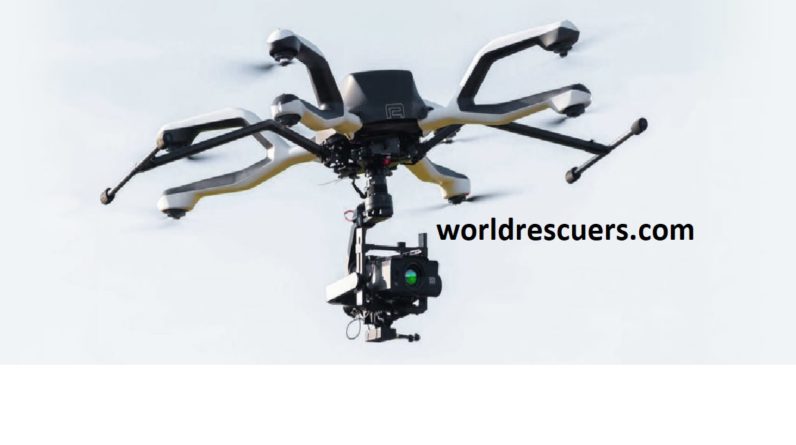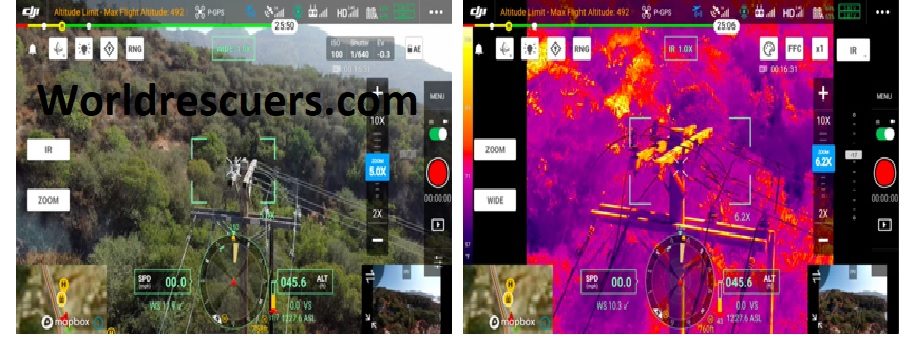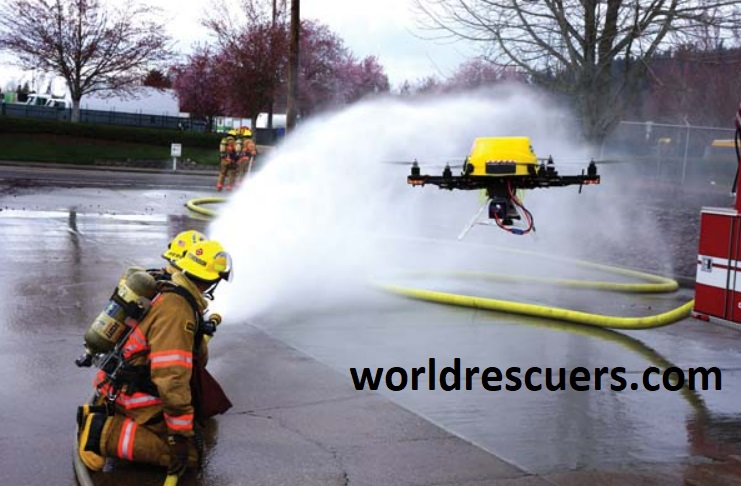
Every second delay in emergency services leads to more property and liver damage. The response time of the responders is always based on the initial information. Similarly, the managemnt time of any emergency depends upon the emergency management cycle involving identification, risk assessment, planning, etc. The thermal drone can help emergency services identify the firing process. Using a thermal camera drone in the service may help assess the large area fire with an eagle-eye view. Through a thermal drone, the incident commander can view the full-scale real-time fire with a broader angle in a shorter time. This time reduction helps the leader efficiently manage incidents by reducing both property and life loss.
Controlling fire
Containing the spreading fire would be the first mission of the incident commander. The drone operator having proper drone training of the team would establish set up within two or three minutes and start the flight of the thermal drone.
Features of Thermal Camera Drone
The Mavic 2 Enterprise Dual is equipped with dual sensors that provide visual and thermal imaging. The thermal vision drone helps the incident commander to obtain exact information- Locating and containing the seat of the fire. 
This model- a drone with thermal imaging, also provides customized color palettes to achieve higher contrast and better visibility of the incident area. The thermal drone allows the team leader to identify and prioritize fire spots while increasing the speed at which they were extinguished.
“We were able to put out the grass fire in 30 minutes. The M2E Dual’s with thermal imaging camera, aerial imagery gave us a good vision of what’s on fire and how to access the burning areas quickly,” commented Chief Baker.
Thermal drone can advantage your department
Suppose you belong to the department or an organization that provides the following services or activities. In that case, a thermal drone may be the perfect piece of product to enhance the quality of work:
- Firefighting: Firefighting is the main domain for the usage of a thermal drone. Heat mapping from the air allows firefighters to get proper risk assessment. When working inside, using a thermal drone makes it possible to map out possible points of failure. While in wildfire scenarios, drones can help crews intercept fires’ progress and pattern in the open.
- Search and Rescue: Fires are not the only types of disasters where thermal drones can rescue or other volunteers. After catastrophes such as floods, landslides, earthquakes, tornadoes, and hurricanes, thermal drones can help rescue teams find missing victims, even at night. These thermal drones with UAVs can also track down individuals who have become lost in the wilderness.
- Aerial utility and mine drone inspections: Inspecting utility infrastructure, from plants and solar panel installations to far-flung power lines, is easier with drones. Using thermal camera drone alongside conventional imaging allows crews to watch out for potential failure risks in new ways or even inspect the status of thermal panels. Drones can fly over the site and take readings no matter how large a plant or mine is.
- Advanced agriculture: Monitoring crops and grazing herds from the air is a potentially overlooked use for drones. Thermal imaging lets farmers measure fields’ heat exposure and track animals, even at night. Ongoing efforts to make farming more efficient through technology deployment are a perfect match for drone deployment.
Important points to remember while buying thermal Drone
Words To Look For When Buying A Drone
When you start looking and shopping for a drone, you’ll notice a number of acronyms. Understanding these will make sure you buy the right thermal drone for your exact needs.
RTF stands for ready-to-fly. The name is bitter misleading, as you’ll often need to install the propeller in this type of drone before flying. You’ll also need to charge your drone’s battery.
ARF stands for almost-ready-to-fly. If you buy an ARF drone, you’re actually buying a drone kit. Usually, these kits don’t come with transmitters or receivers.
FPV refers to First-Person Video. This type of thermal drone means the user can stream footage from a first-person perspective to a phone. It’s a good thing to have for photography.
Buying a Drone May Require Registration
The Federal Aviation Administration (FAA) classifies drones as Unmanned Aircraft Systems (UAS) and requires registration of all UAVs weighing more than 0.55 pounds and less than 55 pounds. This is less of a hassle than it sounds – registration only costs $5 per aircraft and is valid for 3 years.
Upon successful registration, you will receive a unique identification number which must be displayed on your thermal drone. You must be of at least 13 years old to register a thermal drone.
What Drone Should I Buy?
Many drones are controlled by simple mobile devices rather than drone-specific controllers by Drone operators. This is really convenient unless you own an outdated mobile device. Typically you’ll find that thermal drone software only works with newer smartphones running modern operating systems.
Flying in Certain Conditions Could Put Your Drone at Risk
Even if you’re feeling confident when flying your purchased drone, make sure you don’t get too cocky. If you take flight in a poor conditional environment, you could easily damage your thermal drone or risk losing it.
You Must Heed Flying Guidelines
The following rules or guidelines are followed while operating a drone:
- Make sure you can see your thermal drone at all times of flight
- Remain well clear of and do not interfere with manned aircraft operations in the area
- Do not intentionally fly over unprotected persons or moving vehicles.
- Remain at least 25 feet away from people and vulnerable items.
- Do not fly in strong weather conditions in any area.
- Do not fly under the influence of alcohol or drugs.
Most of the above look common sense but are most important.

Hi, I am John Smit a Captain in Fire Department City of Newyork with over years of experience in the field of Firefighting and HSE. My passion for fire safety started when I was a young boy and witnessed a neighbor’s house go up in flames along with precious lives. Since then, I had dedicated my life to ensuring the safety of buildings, properties, and individuals in case of a fire and medical emergencies.

